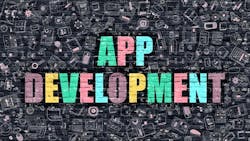Fifteen years after it was launched, the open source REDCap (Research Electronic Data Capture) tool has grown to more than 3,600 institutions in 131 countries and 1 million users involved in both single and multi-site research studies. Although EHR integration has always been daunting, a new module that takes advantage of FHIR is available in Epic’s App Orchard and promises to make pulling data from EHRs for research purposes much easier.
REDCap is a web-based platform originally devised by Paul Harris, Ph.D., professor of biomedical engineering, biomedical informatics and biostatistics at Vanderbilt University Medical Center.
On Oct 18, Harris gave a presentation to the NIH Collaboratory Grand Rounds on the potential for FHIR to help make it easier to transfer data from EHRs to REDCap for clinical research studies. Harris said that a few years ago, as Vanderbilt was getting ready to switch from a homegrown EHR to Epic, he turned to Epic engineers for help for doing the integration. “We didn’t want to get into the EHR business and they didn’t want to get into the electronic data capture business,” he said. “Working together to create something better than what we could create independently made sense.”
Previously, the only way researchers could get this data to flow from the EHR to REDCap was to pull it from a data warehouse, but there was always a time lag. For instance, if they extracted a glucose measurement, it could be at least 24 hours old. But with Epic and other EHR developers adopting FHIR, there is no longer a dependency on the data warehouse, and the data you pull can be milliseconds old rather than 24 hours.
The work does involve some mapping between Epic and REDCap. The project team at Vanderbilt created a simple interface for research teams to see what is shareable in their version of REDCap and their version of Epic. Then they can say, “This is what I want from the EHR to populate a case report form,” he said. It allows them to pull data into Redcap, so they don’t have to do foraging in the chart or copy and paste or look and type. There are security tokens going back and forth between the systems.
Once this first use case of case report form mapping was addressed, they went back to the researcher community. “About 50 percent said fantastic, that is exactly what we needed,” he recalled. But the other 50 percent said this is not what they had in mind. What they wanted instead was a secure data mart. “They said, ‘What I want is to give you a cohort of individuals and a date range, and then I want that pick-and-choose tool for the data elements. I want to click a button and have a REDCap project created for me. So we created this living, breathing data mart for support of those studies. Other use cases are percolating, he said, including for recruitment and retention. Another involves multi-center research projects, which requires building a data coordinating center version of REDCap to push or pull data from local systems.
Harris said that in February 2019 they put the tool in Epic’s App Orchard. “It makes it easier to set up local Epic-to-REDCap initiatives and it adds street credibility for health IT folks,” he explained. They spend more time thinking about clinical stuff, not research. We are trying to put it in a framework that is easy for them to see and consume. It helps socialize and get things set up, which is mostly governance, policy, and prioritization. Today, we have 35 institutions live or on the way to live with local Epic-to-REDCap connectivity. Of all the apps in the App Orchard, we are number 6 in terms of sign-up and adoption.” It does involve some initial work, he said, but then you are set up to support the next 150 projects without much help from health IT.


